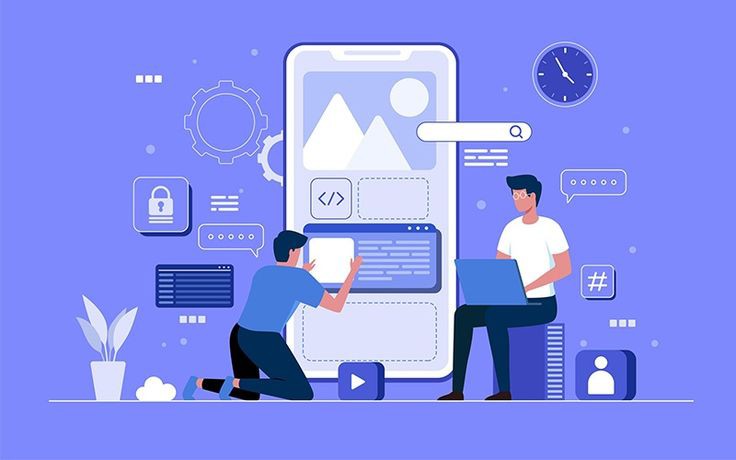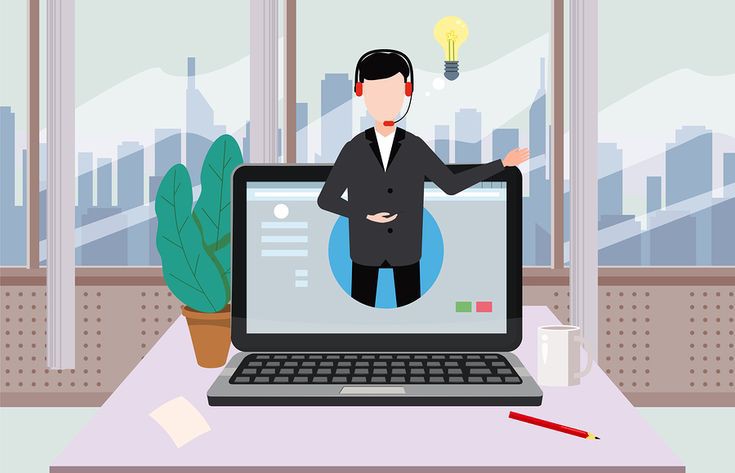Introduction
India's B2B Marketing Evolution Technological developments, digital change, and a better comprehension of the varied demands of Indian businesses are driving a dramatic overhaul of the B2B marketing scene in India.
As 2024 approaches, marketers are putting more and more emphasis on utilizing cutting-edge technology like artificial intelligence (AI), machine learning, and data analytics to provide their customers with tailored, interesting experiences. Given the linguistic and cultural diversity of the Indian market, B2B marketing tactics are increasingly using mobile-first approaches and content marketing in regional languages.
1. AI and Machine Learning's Ascent in B2B Marketing
With an emphasis on how Indian businesses are using these trends to stay competitive in a fast changing digital ecosystem, we will examine the major trends influencing B2B marketing in 2024 in this extensive guide. We will explore the expanding roles of AI and machine learning, the value of content marketing in regional marketing campaigns, the emergence of mobile-first tactics, and the necessity of account-based marketing (ABM).

We will also look at how these trends are changing customer engagement and lead creation, which will improve the efficacy and efficiency of B2B marketing.
Within B2B marketing, artificial intelligence and machine learning have changed the game. With the ongoing advancement of these technologies, businesses are now able to attain previously unattainable levels of efficiency and customisation in their marketing campaigns.
Salesforce reports that 51% of B2B marketers are already utilizing AI to better their marketing tactics, and 58% of these marketers report experiencing improvements in personalization and targeting.
AI-Powered Audience Segmentation and Personalization
The capacity of AI to provide highly tailored experiences is one of the technology's most important benefits for B2B marketing. Artificial intelligence (AI) algorithms are able to more precisely segment audiences by analyzing large amounts of data. This enables marketers to target particular groups with messages that are tailored to their requirements, tastes, and habits.
This degree of customization raises conversion rates while also improving consumer engagement. Improved audience segmentation and tailored campaigns are made possible by AI and machine learning, which is completely changing B2B marketing. According to Saif Ahmad Khan, founder of LEDSAK, "big IT services companies are setting the standard for using AI for personalized marketing and predictive lead scoring.
AI-Powered Analytics and Chatbots
Customer engagement is another area where AI is having a big impact. AI-powered chatbots are starting to play a major role in B2B transactions. These solutions let organizations reply to requests promptly and effectively by offering rapid, round-the-clock customer care.
Additionally, marketers are able to improve their efforts for better results by gaining deeper insights into customer behavior with AI-driven analytics tools. "AI-driven technologies are enhancing the efficacy of marketing communications and augmenting return on investment via programmatic advertising," stated Khan. We may anticipate even more cutting-edge uses of AI in B2B marketing as the technology develops, which will increase the potency of marketing campaigns.
2. Traction Is Gained via Account-Based Marketing (ABM)
In B2B marketing, account-based marketing, or ABM, has become a crucial tactic, especially for businesses aiming to reach out to multinational corporations and huge corporations. Rather than aiming broad, account-based marketing (ABM) concentrates on developing customized campaigns for individual accounts. With the help of this focused strategy, companies may establish closer bonds with their most important customers, which eventually boosts engagement and conversion rates.
ABM's Development in India
ABM is becoming more and more common in India among big businesses and IT service providers. ABM is regarded as a critical approach by 92% of B2B marketers, and 60% of them report more engagement as a result of their ABM activities, per a SiriusDecisions study. In 2024, it is anticipated that this trend would continue as more Indian businesses see the benefits of this customized approach.
Hariom Seth, the founder of Tagglabs, stated that "ABM is gaining traction, especially among large Indian corporations and IT services companies targeting global clients." In India, where digital transformation is happening quickly, individualized consumer experiences are highly valued. To gain a deeper understanding of its multicultural customer, Indian business-to-business companies are investing in CRM systems and data analytics.
Tailored Information for Important Clients
Developing content that appeals to particular accounts is one of the main tenets of account-based marketing. Creating case studies, whitepapers, and other marketing materials that speak to the particular difficulties and objectives of each account is frequently required for this. Businesses can establish trust with their target accounts and show their expertise by offering insightful, timely information.
In order to keep B2B audiences interested, content is still essential. Seth observed that there is a strong demand for "whitepapers on Indian regulatory environments and case studies with local success stories." We should anticipate more creative approaches to content generation as ABM develops, which will increase the strategy's efficacy even more.
3. Mobile-First Approaches:
The B2B Marketing Landscape of the Future Mobile-first tactics are becoming more and more crucial in B2B marketing due to India's extensive use of smartphones and mobile internet. Businesses will be in a better position to interact with their target audiences in 2024 if they prioritize mobile experiences, especially in a country as diverse and mobile-centric as India.

The Value of Optimizing for Mobile
In B2B marketing, mobile optimization is now required. Businesses need to make sure that their websites, emails, and marketing materials are adequately optimized for mobile devices, as more and more decision-makers are using their cellphones to investigate goods, services, and vendors.
This includes quick loading times, intuitive navigation, and responsive design. Seth continued, "WhatsApp is particularly well-liked for business communication in India, and social selling on LinkedIn is picking up steam." Utilizing mobile platforms such as LinkedIn and WhatsApp allows B2B marketers to connect with their audiences more efficiently and encourage greater levels of engagement.
Strategies for Mobile-First Content
Apart from tailoring their digital assets for mobile devices, B2B marketers also need to think about the content they produce and distribute. Generally speaking, mobile users consume content in a different way than desktop users do; they tend to choose shorter, easier-to-read formats such as social network posts, videos, and infographics. In order to satisfy the demands of their mobile audiences, firms must modify their content strategies.
In B2B marketing, video material in particular is becoming more popular, especially in regional languages. Businesses who invest in mobile-first content strategies will be better positioned to interact with their target audiences and meet their marketing objectives as mobile internet adoption in India continues to rise.
4. Reaching Diverse Audiences with Content Marketing in Regional Languages
India boasts a vast linguistic diversity, with more than 1,600 different languages spoken there. Therefore, regional language content marketing is becoming more and more crucial for companies trying to engage with their target markets. Businesses may foster deeper connections and increase engagement by producing content that speaks to consumers in their mother tongues.
The Increasing Requirement for Localized Content
The increasing number of people gaining internet connection in rural and semi-urban areas has led to an increase in the demand for content in regional languages. Internet users in India who prefer content in their local languages are predicted to increase from 234 million in 2016 to 536 million by 2024, according to a KPMG analysis.
Seth stated, "Video content is becoming more popular, especially in regional languages. Interactive infographics and webinars are also becoming more popular." Businesses may take advantage of this expanding market and raise their brand awareness by producing content in languages including Bengali, Tamil, Telugu, Hindi, and Tamil.
Content Customization for Cultural Contexts
Cultural context is just as important to content marketing as language. Businesses need to be aware of the subtle cultural differences that affect consumers' perceptions and reactions to marketing messages in order to interact with audiences across geographies. This could entail changing the content's messaging, images, and even format to suit regional tastes.
According to Arunima Singh, COO of Asymmetrique, "webinars, podcasts, and interactive formats are proving to be effective as they recreate the engagement of physical discussions and build confidence among decision-makers." B2B marketers can improve results and establish deeper connections by customizing content to the cultural contexts of their target audiences.
5. Proven Lead Creation Techniques for 2024
B2B marketers continue to place a high premium on generating high-quality leads, and the methods for doing so are changing quickly. Businesses will need to take a multipronged strategy to lead generation in 2024, using social selling, virtual events, and gated content to draw in and interact with potential customers.
Gated Content's Power
Whitepapers, eBooks, and case studies are examples of gated material that is still useful for generating leads. Businesses can draw in interested prospects and nurture them through the sales funnel by providing insightful, high-quality content in exchange for contact details.
This strategy positions the company as a thought leader in its sector and aids in lead generation. According to Khan, "gated assets like eBooks, case studies, and whitepapers are highly effective for attracting interested prospects." LinkedIn is still a crucial medium for generating B2B leads, but webinars and virtual events provide real-time engagement and knowledge demonstration.
Making the Most of Virtual and Webinar Events

In B2B marketing, webinars and virtual events have grown in popularity, especially after the COVID-19 epidemic. These virtual gatherings provide companies with an exceptional chance to interact in real time with their target audiences, exchange insightful information, and cultivate connections with prospective customers.
2024 will see webinars and virtual events maintain their critical position in lead generation. Through providing engaging and educational workshops on pertinent subjects, companies may draw in quality leads and establish their brands.












